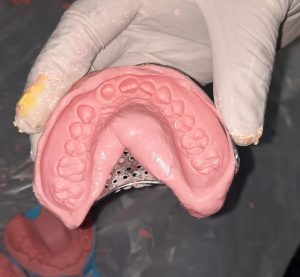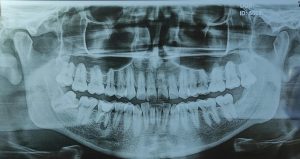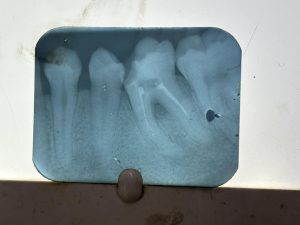Wisdom teeth removal is a common procedure that many people undergo, often during their late teens or early twenties. While the surgery itself may seem daunting, understanding the recovery process can alleviate much of the anxiety. This guide offers a detailed, day-by-day timeline to help you navigate the post-operative period, ensuring a smooth and speedy recovery.
Table of Contents
Introduction: Understanding Wisdom Teeth Recovery
Wisdom teeth, or third molars, are the last set of teeth to emerge, usually between the ages of 17 and 25. Due to limited space in the mouth, these teeth often become impacted, leading to pain, infection, and other dental issues. Consequently, many people opt for their removal.
The recovery process is crucial as it directly affects your overall oral health and well-being. By following a structured timeline, you can ensure proper healing and avoid complications. This article provides a comprehensive day-by-day wisdom teeth recovery timeline, offering tips and insights to make your recovery as smooth as possible.
Day 1: The Surgery and Immediate Aftercare
What to Expect Right After Surgery
Immediately after the surgery, you may feel groggy due to the anesthesia. It’s essential to have someone accompany you to drive you home and assist you during the initial recovery period. You might also experience some bleeding, which is normal. Your dentist will provide gauze pads to place over the extraction sites to control the bleeding.
Immediate Aftercare Tips
- Rest: Rest is crucial during the first 24 hours. Avoid any physical activity and keep your head elevated. Prop yourself up with pillows while resting or sleeping to reduce swelling.
- Ice Packs: Apply ice packs to your cheeks for 20 minutes on and 20 minutes off to reduce swelling. Continue this for the first 48 hours to minimize inflammation.
- Medications: Take prescribed painkillers and antibiotics as directed by your dentist or oral surgeon. These medications help manage pain and prevent infection.
- Diet: Stick to a liquid or soft food diet. Avoid hot, spicy, or hard foods that could irritate the surgical site. Options like broths, smoothies, and gelatin are ideal during this period.
- Hydration: Drink plenty of fluids to stay hydrated, but avoid using straws as the suction can dislodge the blood clots and lead to a painful condition called dry socket.
Day 2 to 3: Managing Swelling and Pain
Swelling Peaks
Swelling usually peaks around the second or third day after surgery. This is a normal part of the healing process and indicates your body’s response to the surgical trauma.
Pain Management
- Medication: Continue taking pain medication as prescribed. Over-the-counter pain relievers like ibuprofen can also help manage pain and reduce inflammation.
- Saltwater Rinse: Begin rinsing your mouth with warm salt water (1/2 teaspoon of salt in 8 ounces of water) to keep the surgical area clean. Do this gently to avoid dislodging the blood clots. Click here to view a video tutorial on how to rinse gently after tooth extraction.
- Hydration: Drink plenty of fluids, but avoid using straws as the suction can disturb the blood clots.
Diet Recommendations
- Soft Foods: Continue with soft foods like mashed potatoes, yogurt, applesauce, and smoothies. These foods are easy to eat and won’t irritate the healing gums.
- Avoid Certain Foods: Steer clear of crunchy, chewy, or acidic foods that can irritate the extraction sites. Also, avoid seeds and nuts that can get lodged in the wounds.
10 Best Things to Eat After Tooth Extraction
Day 4 to 7: Gradual Improvement
Reduction in Swelling and Pain
By the fourth day, you should notice a gradual reduction in swelling and pain. If the pain persists or worsens, contact your oral surgeon as this may indicate an infection or other complications.
Oral Hygiene
- Brushing: You can resume brushing your teeth but be gentle around the extraction sites. Use a soft-bristled toothbrush to avoid disturbing the healing tissue.
- Saltwater Rinses: Continue with saltwater rinses after meals to maintain cleanliness and prevent infection. Be gentle when swishing to avoid dislodging the blood clots.
Diet Expansion
- Introduce More Foods: You can slowly introduce more solid foods like scrambled eggs, soft pasta, and cooked vegetables as you feel comfortable. Gradually reintroduce foods to your diet based on your comfort level and healing progress.
- Avoid Irritants: Continue avoiding foods that can irritate the healing tissue, such as spicy foods, chips, and carbonated beverages.
Day 8 to 14: Significant Healing
Noticeable Healing
Most people experience significant healing between the second and third week post-surgery. Swelling and bruising should subside considerably, and the pain should diminish.
Resuming Normal Activities
- Activity Level: Gradually resume normal activities, but avoid strenuous exercise or heavy lifting, which can increase blood pressure and risk of bleeding.
- Diet: Continue to expand your diet but remain cautious with hard or crunchy foods that could disrupt the healing process.
Oral Care
- Brushing and Flossing: You can return to your regular oral hygiene routine but still avoid the extraction sites if they are tender. Be gentle around the surgical areas to prevent irritation.
- Mouthwash: You can start using a mild mouthwash if recommended by your dentist. Alcohol-free mouthwashes are preferred to avoid stinging the sensitive tissues.
Week 3 to 4: Near Full Recovery
Healing Progress
By the third to fourth week, most of the healing should be complete. You may still have some sensitivity or mild discomfort, but it should be manageable and less frequent.
Final Check-Up
- Follow-Up Appointment: Attend any follow-up appointments to ensure proper healing and to address any concerns. Your dentist or oral surgeon will check the extraction sites to ensure they are healing correctly.
- Stitches Removal: If you had non-dissolvable stitches, they would be removed during this period. Dissolvable stitches usually dissolve on their own within two weeks.
Returning to Normal Diet
- Diet: You can generally return to your normal diet but be mindful of any lingering sensitivity. Avoid very hard or crunchy foods that could still irritate the extraction sites. Read more about when can you return taking solid foods after tooth extraction.
- Oral Hygiene: Continue your regular oral care routine, ensuring all areas are clean and free from food particles. Good oral hygiene helps prevent infection and promotes overall oral health.
Potential Complications and How to Handle Them
Every procedure, whether it be major or minor, has its complications. If proper care is not given to the surgical site, it can definitely lead towards severe complications.
For tips on proper care, read the article on things you can’t do after wisdom teeth removal.
Below is a list of common complications, and a few tips from our expert team on how to avoid these complications.
A symptom of each of these complications is severe tooth pain. You are lucky if you have not experienced throbbing toothache in your life. Even if you are suffering from extreme tooth pain due to any reason, read another one of our articles by clicking here to find out all the relevant information about tooth pain, and also about its relief methods.
Dry Socket
Dry socket occurs when the blood clot at the extraction site dislodges or dissolves, exposing the underlying bone and nerves. This can cause severe pain and delay healing.
Symptoms
- Severe pain a few days after the extraction
- Visible bone in the socket
- Bad breath or an unpleasant taste
Prevention and Treatment
- Avoid Straws and Smoking: These activities can dislodge the blood clot. Avoid smoking and using straws for at least a week after surgery.
- Pain Management: Over-the-counter pain relievers can help, but see your dentist if the pain is severe. They may provide medicated dressings or other treatments.
- Follow-Up Care: Your dentist may apply a medicated dressing to the socket to promote healing and alleviate pain.
Infection
Infections can occur if food particles or bacteria enter the extraction site.
Symptoms
- Persistent swelling or pain
- Pus or discharge from the site
- Fever
Prevention and Treatment
- Oral Hygiene: Maintain good oral hygiene with saltwater rinses and gentle brushing. Keep the extraction sites clean to prevent infection.
- Antibiotics: Take prescribed antibiotics as directed. Finish the entire course even if you feel better to ensure the infection is fully treated.
- Contact Your Dentist: If you suspect an infection, seek prompt medical attention. Early treatment can prevent complications and promote faster healing.
Nerve Damage
While rare, nerve damage can occur during wisdom teeth removal, leading to numbness or tingling in the lips, tongue, or chin.
Symptoms
- Numbness or tingling in the lips, tongue, or chin
- Altered taste sensation
- Persistent changes in sensation
Prevention and Treatment
- Surgeon Skill: Choose an experienced oral surgeon. Discuss any concerns about nerve damage before the procedure.
- Immediate Care: Contact your surgeon if you experience prolonged numbness or changes in sensation. While some nerve damage may resolve over time, your surgeon can provide guidance and possible treatments.
Long-Term Care and Maintenance
Oral Hygiene
Maintaining good oral hygiene is essential for long-term health.
- Regular Brushing and Flossing: Brush and floss daily to prevent plaque buildup. Use fluoride toothpaste and replace your toothbrush regularly.
- Dental Check-Ups: Regular dental visits help monitor oral health and address any issues promptly. Your dentist can provide professional cleanings and preventive care.
Read 30 ways to keep your teeth healthy for a smooth post-op wisdom teeth recovery.
Diet and Lifestyle
- Healthy Diet: A balanced diet supports overall health and healing. Include a variety of fruits, vegetables, whole grains, and lean proteins.
- Avoid Tobacco: Smoking can delay healing and increase the risk of complications. If you smoke, consider seeking support to quit.
Monitoring for Complications
Stay vigilant for any signs of complications, even months after the surgery. Persistent pain, swelling, or unusual symptoms warrant a dental consultation. Regular check-ups with your dentist help monitor your oral health and catch potential issues early.
Conclusion: Ensuring a Smooth Recovery
Recovering from wisdom teeth removal involves several stages, each with its own set of challenges and milestones. By following this day-by-day wisdom teeth recovery timeline, you can manage your recovery effectively, minimize discomfort, and avoid complications. Remember, every individual’s healing process is unique, so listen to your body and seek professional advice when necessary. With proper care and attention, you’ll soon be back to your regular routine, free from the discomfort that once plagued you.
In conclusion, wisdom teeth removal, while a common procedure, requires diligent aftercare and patience. Following a structured recovery plan and maintaining open communication with your dental care team are crucial for a smooth recovery. By understanding each phase of the recovery process and taking proactive steps to care for yourself, you can ensure a healthy and swift return to normalcy. This comprehensive guide aims to provide you with the knowledge and tools necessary to navigate your wisdom teeth recovery journey with confidence and ease.



